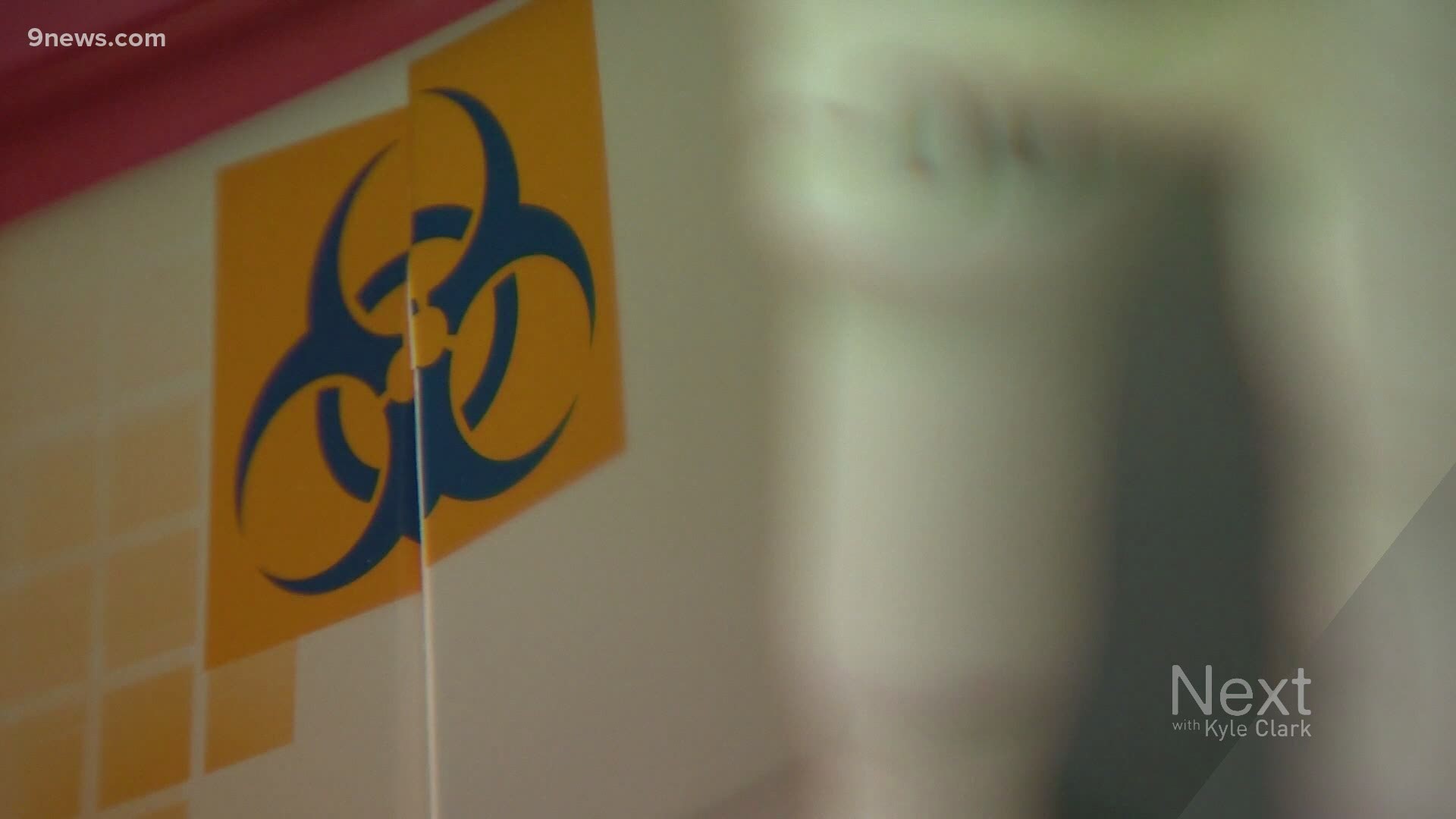DENVER — It's been a puzzling couple of weeks for a Colorado family.
In mid-July, Scott Janson said his wife started to feel sick. She was tested for COVID-19, and it came back positive.
When that result came back, Janson and their daughter went for a COVID-19 test right away, but to their surprise their tests came back negative.
They took the test more than a week after Janson's wife started showing symptoms and said they never felt sick.
Janson said his son went for a test but didn't feel like the sample taken at the clinic was good enough so he went to get a second test at another facility that same day.
The first test came back negative, but the second test came back positive.
All of the family members took a nasal swab test, and results came in two to three days.
The entire family also quarantined, which is the right thing to do.
Dr. Richard Zane with UCHealth said there are a couple of scenarios that play out when one person in a household tests positive for coronavirus, but no one else does.
He said the most probable explanation is the person testing negative was never infected or never manifested enough of the virus to get an adequate sample on a swab.
Zane, who could comment on the Janson family's case, said in general, people who are asymptomatic have a higher chance of a false negative.
This could be because there isn't enough of a viral load to test positive, or not enough of the virus in a given sample.
"Ideally you would wait five to seven days to get tested," Zane said. "Regardless of if the test is negative, you have to behave as if you were exposed to the virus if you've been exposed."
This means going into quarantine and isolating.
CDPHE gave the same advice in an e-mail, writing:
"It's possible one person in a household can test positive and another can test negative, even if there was close exposure. Because the incubation period for COVID-19 can extend up to 14 days, it's also possible someone who is asymptomatic and who tests within 7 days still has not developed enough of the virus to test positive. To be safe, if a person in a household tests positive-- all others in that house should quarantine. "
CDPHE also elaborated on why this could be, writing:
"That could happen for a variety of reasons: the household member who tested positive isolated quickly enough to mitigate spread, the household member who tested positive was more susceptible to contracting the virus than others in the home, or the person who tested negative was asymptomatic and tested too early -- the incubation period can extend to 14 days. "
Zane also reminded people that positive contact in terms of COVID-19 means less than 6 feet of distance, without masks, for 15 minutes or greater increases the probability of exposure to the virus.
What do you do if you receive different test results?
Zane said if you have a positive result and a negative result to assume you are positive for COVID-19 and take the appropriate precautions.
To ensure tests are accurate, doctors said to ask about positivity and the specificity of the test.
Zane said the nasal swab that goes in much deeper, the one that is more uncomfortable, is more accurate and again reminded people to not take the test too early.
This is a reminder that these tests aren’t always a hundred percent accurate and that the tests, along with experts' understanding of the virus, is developing simultaneously with the pandemic.
In an e-mail CDPHE said:
"The state uses PCR tests, which are considered the most reliable, and false positives are rare. A false negative with a PCR test could occur if a person is tested early on and the viral load is small-- or if the sample is somehow degraded."
Ultimately it's critical people get tested because when a positive test does come back, not only does the patient know to lock down so do the people around them regardless of what their test says.
It also helps gain an understanding of what’s happening with COVID-19 cases in the community.
SUGGESTED VIDEO: Full Episodes of Next with Kyle Clark

